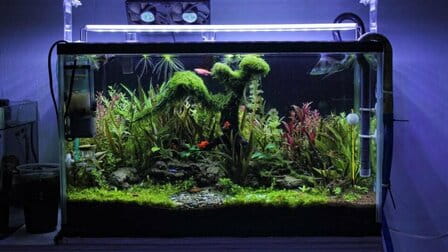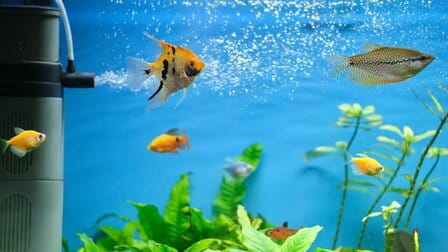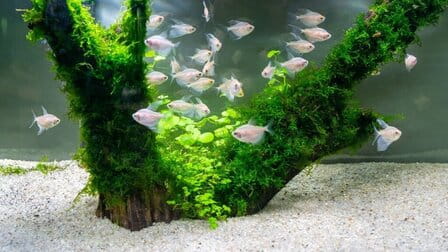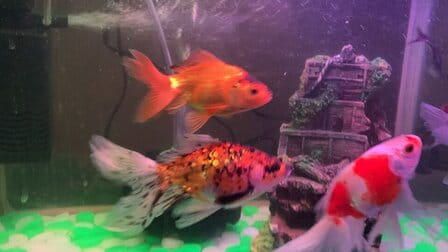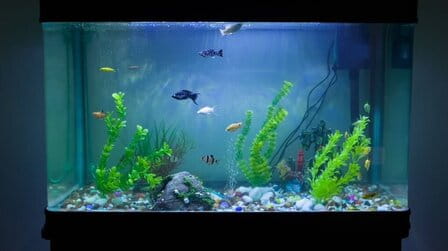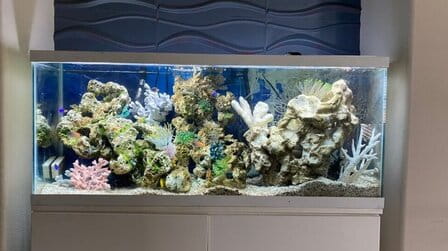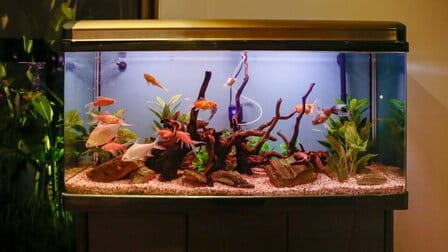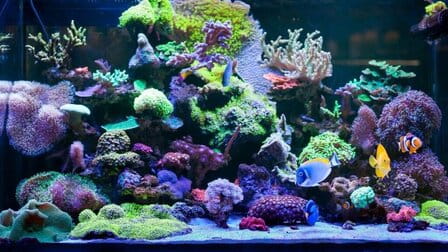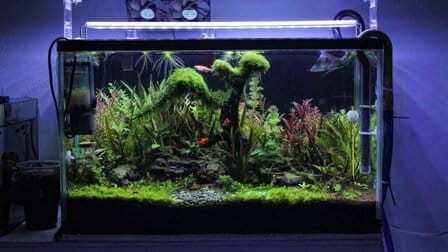Greetings, fellow aquarists! If you're an enthusiast of the underwater world, you're likely aware of the pivotal role that maintaining the perfect aquarium temperature plays in the health and happiness of your aquatic companions. In this comprehensive guide, we're embarking on a deep dive into the intricate art of achieving and sustaining the ideal temperature in your aquarium. We'll explore this topic with both depth and clarity, ensuring that you're well-equipped to create an aquatic environment where your fish and aquatic creatures thrive, all while maintaining a friendly and approachable tone.
The Essence of Temperature Control in Aquariums
Before we delve into the nitty-gritty of temperature management, let's take a moment to appreciate the profound significance it holds in your aquarium's ecosystem:
1. Fish Comfort and Health:
Fish and aquatic creatures are ectothermic, which means their body temperature is regulated by their environment. Maintaining an optimal water temperature ensures their metabolic processes, immune systems, and overall well-being are at their best.
2. Chemical Equilibrium:
Water temperature significantly influences the solubility of gases like oxygen and carbon dioxide. Maintaining a stable temperature helps uphold a balanced chemical environment in your aquarium, a fundamental aspect of aquatic life.
3. Disease Prevention:
Consistently maintaining the right temperature range minimizes stress on your aquatic pets, making them less susceptible to diseases. Fluctuations in temperature can compromise their immune systems, making them more vulnerable to health issues.
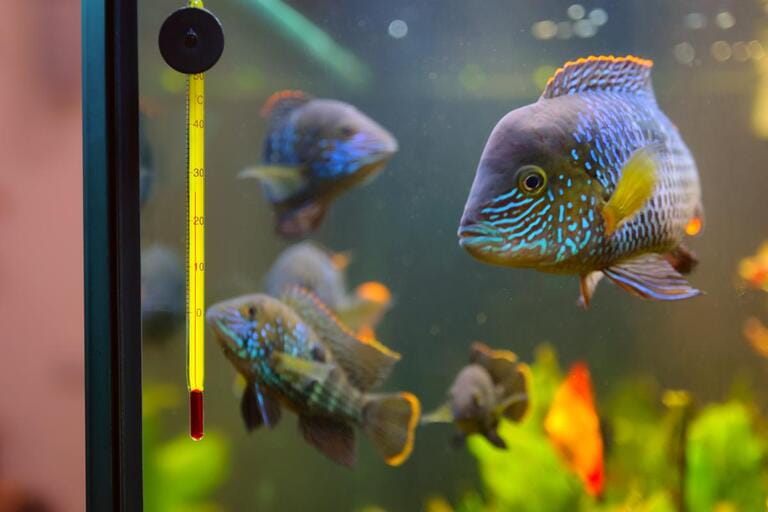
Determining the Ideal Temperature
The perfect temperature for your aquarium depends on the types of aquatic life you house within it. Different species have specific temperature requirements based on their natural habitats. Here are some general categories:
1. Tropical Aquariums (75-82°F or 24-28°C):
Ideal for a plethora of popular freshwater fish, including tetras, guppies, and angelfish.
2. Coldwater Aquariums (50-70°F or 10-21°C):
Suitable for species like goldfish, minnows, and some native fish.
3. Marine (Saltwater) Aquariums (72-78°F or 22-26°C):
The range slightly varies depending on the species, but it generally falls within these temperatures.
4. Reef Aquariums (78-82°F or 26-28°C):
Vital for maintaining the delicate balance of coral and other invertebrates in a reef environment.
To determine the precise temperature range required for your specific fish or creatures, thorough research into their native habitats is key. This research will provide you with a solid foundation for maintaining the ideal temperature in your aquarium.

Essential Tools for Temperature Management
Now that you understand the importance of temperature control and have identified the necessary temperature range, let's explore the essential tools you'll need to create a stable and harmonious aquatic environment:
1. Heaters:
For tropical and marine aquariums, heaters are indispensable. These devices are designed to maintain the water temperature within the desired range.
2. Thermometers:
Accurate thermometers are your trusted allies for monitoring water temperature. They come in various types, including stick-on, digital, and glass thermometers, allowing you to choose the one that suits your needs best.
3. Chillers (for Cooling):
In regions with consistently high ambient temperatures, maintaining a lower water temperature might be challenging. Chillers are essential for cooling down water in marine and reef aquariums.
4. Temperature Controllers:
These intelligent devices automatically adjust your heater or chiller to maintain a stable temperature, providing peace of mind and preventing any extreme fluctuations.

Pro Tips for Maintaining Aquarium Temperature
Now that you're equipped with the necessary tools, let's explore some pro tips for maintaining the ideal temperature in your aquarium:
1. Regular Monitoring:
Check the water temperature daily, especially if you live in an area with significant temperature fluctuations. Quick intervention can prevent temperature-related stress on your aquatic inhabitants.
2. Heater Placement:
Position your heater near an area of strong water flow, such as near a filter output. This ensures even heat distribution throughout your aquarium.
3. Shield from Sunlight and Drafts:
Keep your aquarium away from direct sunlight and drafts, as these can cause rapid temperature fluctuations. Utilize aquarium hoods or covers to minimize temperature disturbances.
4. Gradual Temperature Adjustments:
If you need to change the temperature, do so gradually over several days to avoid stressing your aquatic inhabitants. Sudden temperature shifts can be harmful.
5. Emergency Power Backup:
Consider investing in a battery-operated air pump and heater to maintain the temperature during power outages. This is particularly important in regions with unstable power grids.
6. Quarantine New Additions:
Always quarantine new fish or creatures in a separate tank before introducing them to your main aquarium. This practice helps prevent the spread of diseases and ensures that newcomers are acclimated to the right temperature.

Conclusion
Maintaining the perfect temperature in your aquarium is not just a task; it's an art form. By understanding the specific temperature requirements of your aquatic residents, investing in the right equipment, and adhering to best practices, you can create a stable and comfortable environment for your underwater companions.
Remember, a well-regulated temperature isn't just about keeping your aquatic pets alive; it's about providing them with a thriving and harmonious habitat. So, here's to the success of your aquatic endeavors, and may your aquarium teem with life, vibrant colors, and the serenity of perfectly maintained temperature!

